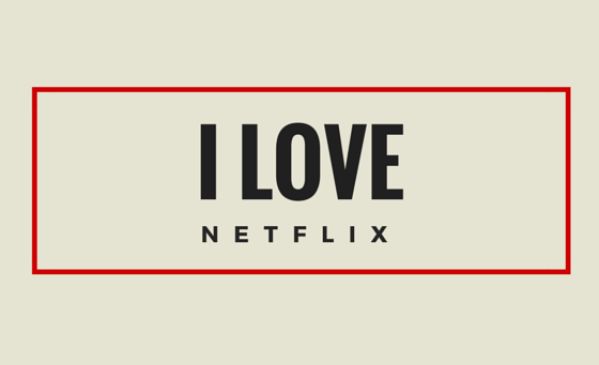The Romantic Movement, born in Europe at the end of the 18th Century, emphasized the individual, the emotional, the spontaneous and the imaginative. It came as a rejection of the earlier classicism movement, which was defined by rationality and order. More recently, Firat and Dholakia placed Romanticism at the center of the post-modern consumer’s life. Today, the world we live in is more romantic than ever. The individual (or consumer) is at the epicenter of everything. The consumer juggles between platforms and devices to broadcast his or her every emotion in real-time.
Platforms that succeed are the ones that enable users to create and share content on a whim. Snapchat’s tremendous success with advertisers and investors is found in its ability to insert brands into people’s self-identity formation process in a non-intrusive, even solicited fashion (users chose to add brand filters to their photos). Asked by Kantar’s CEO Eric Salama why people love Snapchat, Imran Khan (Snap’s CSO) outlined that the app makes it easy for people to tell stories, and that in turn gives them a sense of freedom. Users also rely on Snapchat to construct reality by sharing content only with their best friends, which creates a sense of comfort and safety.
Constructing reality by creating and sharing stories is a theory known by academics as constructionism. It was first theorized by Berger and Luckmann in their book The Social Construction Of Reality. For constructionists, knowledge is derived from and maintained by social interactions. People’s perceptions of reality are related and contribute to reinforcing their common knowledge of reality. Indeed, reality is defined by complex patterns of ongoing actions rather than by individual acts.
Here are 3 ways in which brands can harness Romanticism to help consumers build their identity and make meaning of the world around them:
1. Deliver A Message That Is Culturally Relevant. In a recent presentation, Edwin Wong, VP of research and insights at Buzzfeed, prompted his audience to “recode culture”. For Wong, digital media has created a long tail of cultural identity where niche, weird and one-off identities are the new drivers of the main stream. He contends marketers can no longer rely on traditional demographics, as 80% of gen y/z believes at least one demographic falls into a range. As an example gen y/z do not define gender as binary.
In many ways, Wong is a practicing social constructionist. Social constructionists investigate the processes people go through to describe and explain the world in which they live. The categories people use to classify things emerge from social interactions and evolve overtime as social relationships unfold. For example, people’s definition of morality, romantic love and self-concept vary over time.
In line with academics and Wong’s work, I urge marketers to look at their brands through the lens of social constructivism. That is, embrace the evolution of demographics and psychographics to deliver a message that is culturally relevant to the audience. Ultimately, marketers must move away from demographics and target consumers based on their mindset, need states and life-stages.
2. Personalize Everything. Delivering a personalized brand experience is no longer the exclusivity of luxury brands. Thanks to Amazon and a few other forward-thinking Etailers, people expect brands to give them exactly what they want, when they need it, without any friction.
Stacey Minero (Head of Planning at Twitter) constantly reminds her agency partners that the consumer is in control, not the brand. Bombarded with over 132,000 ads per year, consumers decide how many seconds they will give brands. It is our duty as brand managers to fit that constraint. For Stacey, marketers must rely on the power of personalization to create 1:1 interactions and leverage technology to scale personalization to millions of users.
To deliver such personal experience, brands will have to evolve their approach to segmentation and target myriads of micro-segments in near real-time. Creative agencies must in turn scale the brand’s core message through 1,000’s of iterations that should appeal to each and every micro-segment. They must increasingly rely on Dynamic Creative Optimization to deliver messages that are both segment and platform specific. With that said, the role of creative directors is more critical than ever. Brands can only stand out if they are supported by big ideas and artfully executed copy.
3. Focus On Customer Lifetime Value. The pressure of quarterly earnings reports often prompts us to focus almost solely on tactical goals. Executives tend to favor lower-funnel metrics because these are easy to understand and available in real-time. Too often, these metrics are also used as a proxy to measure Return on Ad Spend. This undermines the importance of brand awareness and other upper-funnel metrics, all of which are crucial touchpoints in the consumer journey.
The obsession with lower-funnel tactics forces marketers to deliver myriads of one-off campaigns that sell (some) products but contribute very little to the brand overall.
Bank of America’s Lou Paskalis calls for the replacement of one-off campaigns with always-on marketing, or Lifetime Value Marketing, as the only sustainable way to create a deep relationship with consumers. Technology will help increase Customer Lifestyle Value by enabling marketers to deliver personal experiences as part of the marketing mix, along with targeted advertising and relevant content. Technology will also allow marketers to sequence these experiences at the user-level across channels and platforms.
Every week, I listen and learn from advertisers, marketing leaders, my academic peers and UCLA students and the feedback is consistent across the board.
For all the devices, the apps and the social-media platforms, we seek the simplest things: We want to be listened to, feel appreciated and make friends for life. It is up to us, marketers, to deliver on this romantic promise.
The Blake Project Can Help: Accelerate Brand Growth Through Powerful Emotional Connections
Branding Strategy Insider is a service of The Blake Project: A strategic brand consultancy specializing in Brand Research, Brand Strategy, Brand Licensing and Brand Education




